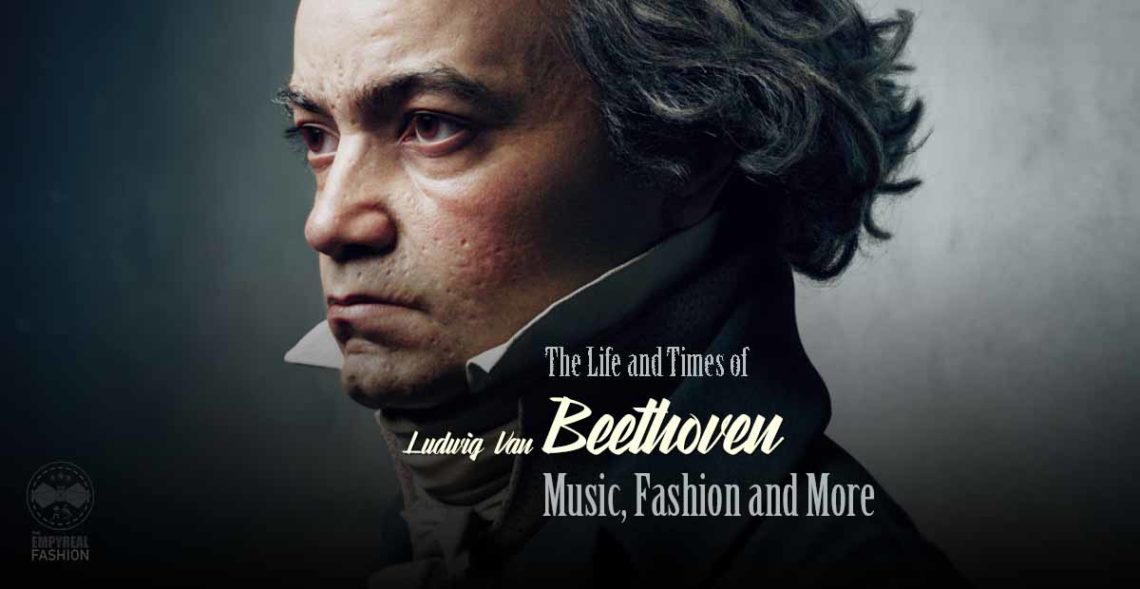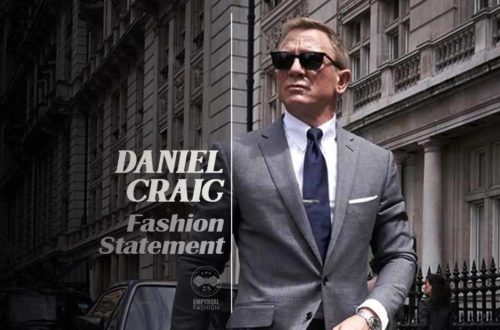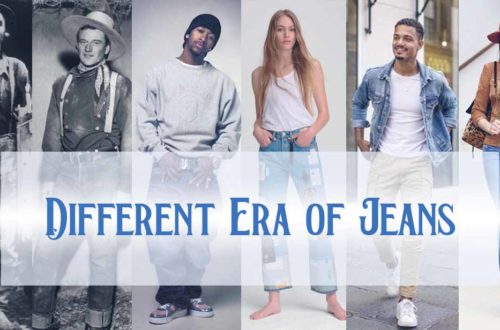
The Life and Times of Beethoven
Many know Beethoven as a world-renowned classical musician, famous for Opus 1 and Moonlight Sonata. But how influential was he in the fashion world, and how has he remained important to this day?
The life of a legend:
Ludwig van Beethoven was an incredibly accomplished German pianist and composer of the Classical period in music. He was born in Born in December 1770. Famously known for composing Symphony No. 5, many of his greatest works were composed when he became deaf. He was born in the city of Bonn in the Electorate of Cologne (which at the time, was a principality of the Holy Roman Empire). He came from an intensely musical family. His father was a court singer, and his grandfather was one of the most prominent musicians in Bonn at the time.
However, he was not taught to appreciate music out of pure joy. Multiple neighbors were witnesses to his father beating him for each mistake he made whilst practicing the clavier as a young boy. He was also deprived of sleep, and locked in the cellar for more hours of practice. He studied both the violin and clavier with his father, and whilst he experienced horrific abuse, he became a musical prodigy at a young age.
Starting to get Recognition:
At this stage in his young life, Beethoven’s father arranged for a public recital in 1778. Whilst 7-year-old Beethoven played incredibly, he received little attention from the press. It was not until age 12 that Beethoven began to get recognition. He was appointed as the Assistant Court Organist, where he published his first composition. An additional honor was bestowed upon him at the age of 19, where he was asked to compose a musical memorial in honor of the death of Holy Roman Emperor Joseph II. Whilst the composition was never performed, it was later discovered to be called ‘Cantata on the Death of Emperor Joseph II’, hailed as one of his earliest masterpieces.
After this, Beethoven moved to Vienna in 1794 . He published a series of three piano trios known as ‘Opus 1’ there. These were met with colossal critical acclaim and financial success, and allowed the talented composer to debut his Symphony No. 1 in C Major at the Royal Imperial Theater in Vienna. At the age of 26, his hearing declined drastically, most likely due to his contraction of Typhus in 1796. However, this did not stop him from composing an opera, six symphonies, four solo concerti and six-string sonatas across the rest of his life! The most famous among these accomplishments was the stunning Moonlight Sonata, which is still taught in music schools centuries later. He died on March 26th, 1827, at the age of 56.
The transition between the Classic and Romantic periods: how did this influence fashion?
The Classical period in music and art was integral to Beethoven’s work. In this period, Classical instrumental arrangements revolved around symphonies without solo piano works, where order, balance and clarity were championed characteristics. This type of music was typified by composers such as Mozart and Haydn as well as Beethoven. However, the Classical period also bled into other mediums at the time, including fashion. At this point in history, men wore long black tailcoat with a top hat, white shirt and trousers. They added black or camel knee high leather boots for their evening dress. The purpose behind this look was to convey a sense of sophistication and class, even if the person wearing the items had neither of the two qualities.
Classical fashion affected women’s clothing too. Whilst they typically wore loose dresses during the day, the fashion changed drastically during the evening. Women wore wide hoop skirts with a petticoat underneath. The skirts were often intricately patterned, and embroidered with pieces of fine silk. They also wore a corset bodice, combined with a blouse that matched the skirt material. Finally, women would wear a large bonnet or hat in pastel colors, with gold or red decorations.
This was in strong contrast to how fashion would evolve when the Romantic era started in the 1830s. Dresses with ornamentation became incredibly popular, with intricate embroidery, cutwork, ruffles and puffs. Large white collars, known as ‘pelerines’, also became a popular 1830s accessory.
Fashion in Germany between 1770 – 1827:
The Classical era was certainly typified by the fashionable clothes worn in 18th century Germany, where Beethoven was born. For women, formal dress revolved around the stiff-bodied ‘mantua’ or round petticoat. Whilst this was worn with an apron on occasion, the formal style eventually gave way to more relaxed fashion as the years progresses.
Additionally, women wore the ‘robe a la francaise’ or sack-back gown, which consisted of a tight bodice, a low-cut square neckline, ornamented with ribbon, lace and floral designs. The gown was typically made from ornate materials, including satin, velvet, Indian cotton and silk. The less formal style of dress, known as ‘robe a l’anglaise’, was a close bodied gown with a pleated back. It consisted of a snug bodice with a full skirt, cut longer in the back to form a small train. Both gowns could be closed in the front, or open to reveal a matching or contrasting petticoat.
Men were additionally dressed in a sophisticated manner. Named as the ‘habit a la francaise’, the male style of dress was characterized in three parts: the ‘justaucorps’ (a long, knee length jacket), a shorted jacket, and breeches. Underneath the breeches, white stockings were worn underneath, accented by heeled shoes with square buckles. These clothes were often made from silks, velvet and brocades, with woolens sometimes subsisted as the main material for sporting costumes.
Hairstyle in 18th Century
Hairstyle at the time was also an incredibly important marker of one’s social status. 18th century men typically wore wigs for more formal events. For informal situations hair was worn long, powdered and brushed back from the forehead, fastened with a black ribbon. This hairstyle originated as one for the convenience of soldiers, who wanted a smart and practical hairstyle for battle. Whilst many composers of this century did wear their hair in this manner Beethoven preferred to keep his hair long and wild, and was the talking point of many contemporaries at the time. In fact, Beethoven’s hair was so famous that celebrated 19th century pianist Anton Halm wanted a lock of his hair to give as a present to his wife.





One Comment
Sterling Stiely
Hey there! I simply wish to give you a big thumbs up for your great info you have got right here on this post. I’ll be returning to your site for more soon.